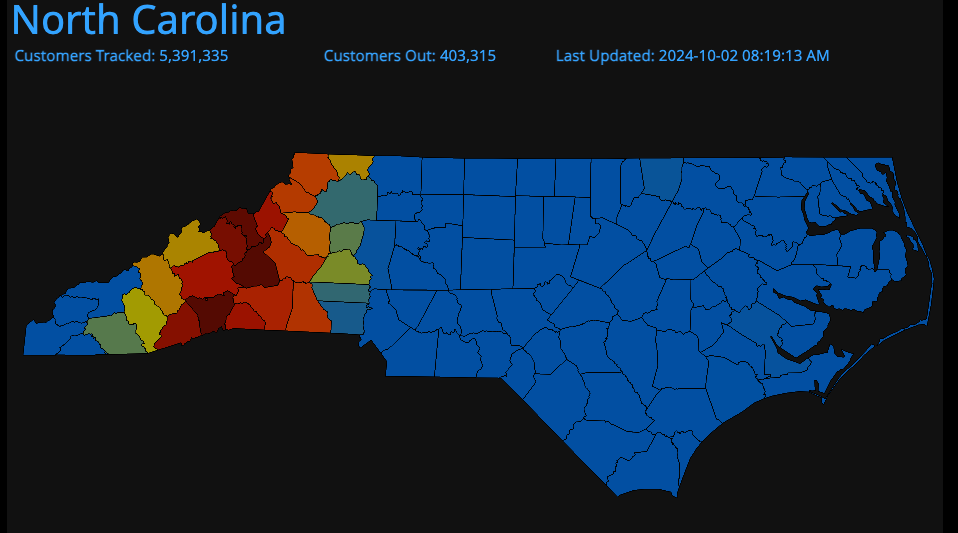In a recent press release, Congressman Chuck Edwards (R-NC) addressed the extensive destruction caused by Hurricane Helene, particularly in his district of Western North Carolina. He reported significant infrastructure damage, particularly to the Duke Energy grid, highlighting that power outages are widespread, with over 400,000 residents still without electricity by mid-week. Edwards pointed out that approximately 360 power substations have been rendered non-operational due to flooding, making assessments of the damage difficult until floodwaters recede. This devastation raises concerns about the long-term implications for the region’s electrical infrastructure, especially as recovery efforts are complicated by significant equipment shortages.
The impact of Hurricane Helene cannot be overstated in the context of America’s growing energy demands. The transition to artificial intelligence data centers, the electrification of vehicles, and domestic manufacturing initiatives have created an unprecedented demand for transformers and other key components of electrical infrastructure. As reported by National Renewable Energy Laboratory researcher Killian McKenna, utilities are struggling with supply chain issues that result in high prices and extended lead times for distribution transformers. These shortages create a risk to the stability and affordability of the energy supply, exacerbating the challenges faced by utility companies and affected residents alike.
A crucial factor in the current transformer shortages is the underlying supply chain constraints, which are attributed to various causes, including raw material sourcing challenges, labor shortages, shipping delays, and ongoing geopolitical tensions. The situation has raised alarms among energy experts, such as Jesse D. Jenkins from Princeton University, who expressed concern over the lack of stockpiled equipment that is vital for restoring power. Jenkins likened the situation to the aftermath of Hurricane Maria, warning that the restoration process may take much longer than anticipated due to insufficient inventory.
In the context of the current energy crisis, some social media users have pointed out that U.S. aid to Ukraine during its ongoing conflict has potentially depleted domestic stockpiles of transformers and other electrical infrastructure. This alarming observation emphasizes the lack of preparedness for natural disasters like Hurricane Helene when resources are allocated overseas. Reports indicate that the U.S. has supplied numerous transformers to bolster Ukraine’s power grid, raising questions about whether such resources should be redirected for immediate U.S. needs, considering the dire situation in North Carolina.
The discussions surrounding these issues have sparked outrage and frustration among citizens, who feel that the Biden-Harris administration’s priorities are misaligned with the urgent needs of American communities. Tweets from notable figures in the energy and infrastructure sectors underscore the gravity of the situation, with warnings that recovery from the widespread outages could take weeks or even months. The sentiment expressed by many observers is that the federal government has neglected domestic infrastructure in favor of international interests, and there is a growing call for new leadership that prioritizes the needs of American citizens.
In conclusion, the devastation wrought by Hurricane Helene serves as a reminder of the fragility of America’s electrical infrastructure, particularly in the face of increasing demand and strained supply chains. The shortage of essential components like transformers poses significant challenges for recovery efforts in North Carolina and raises critical questions about preparedness for future disasters. As communities grapple with the immediate impact of these outages, there lies an urgent need for a reevaluation of national priorities, with a call for leaders to better align resources for domestic infrastructure resilience while ensuring that American citizens are prioritized in times of crisis.

